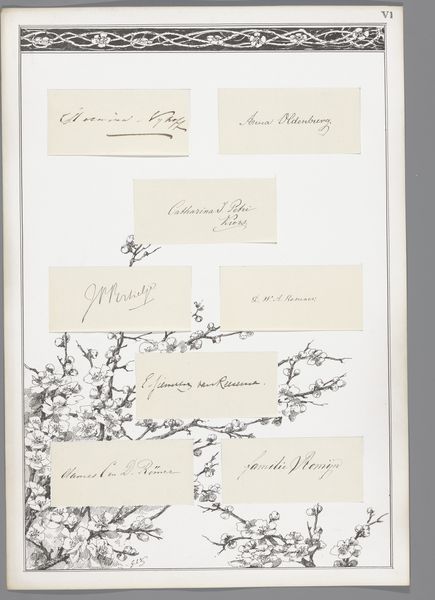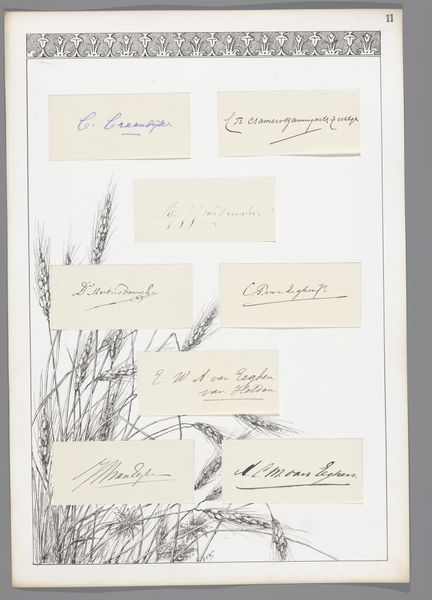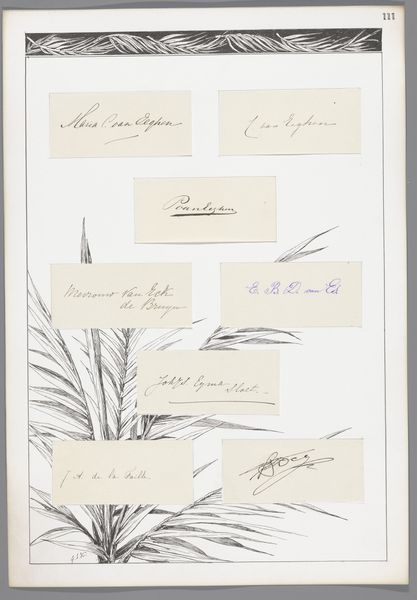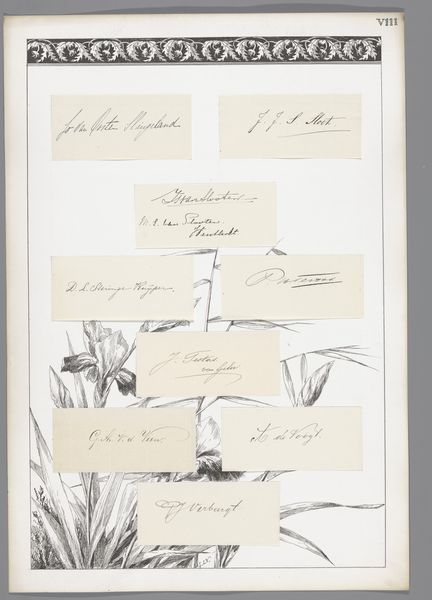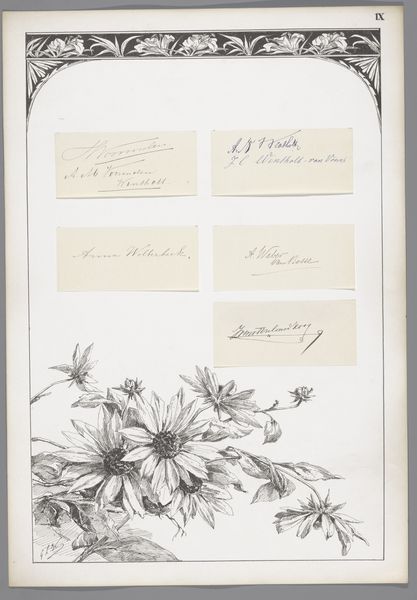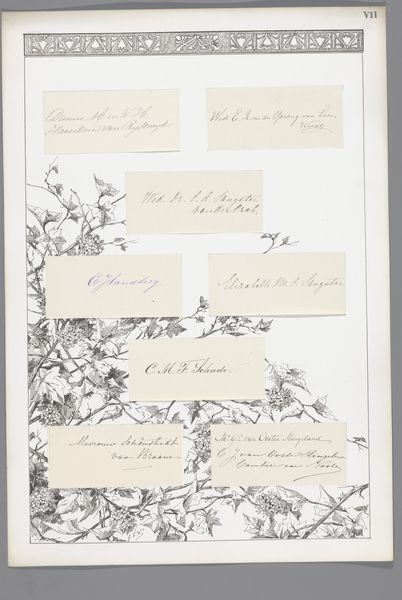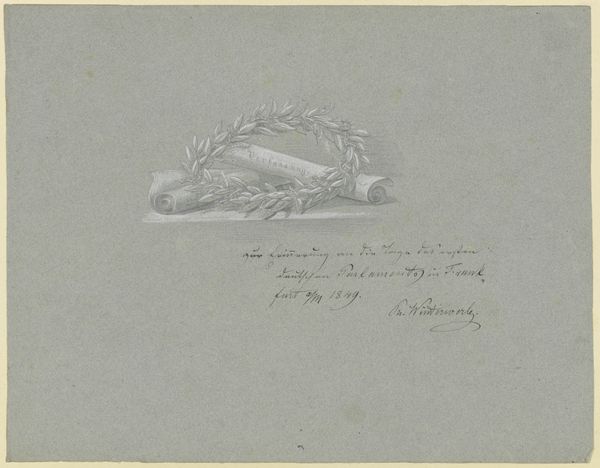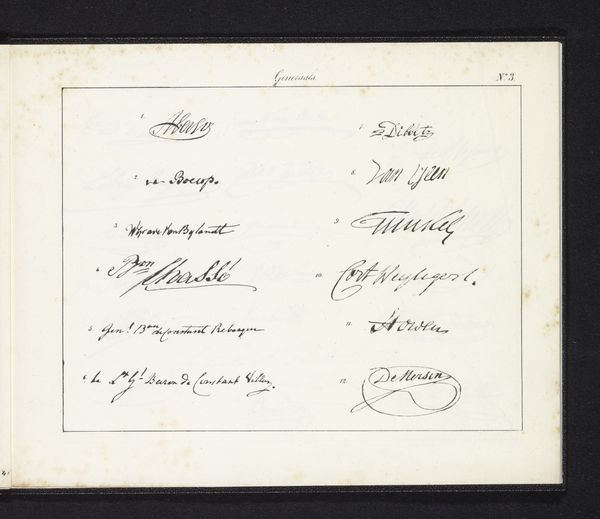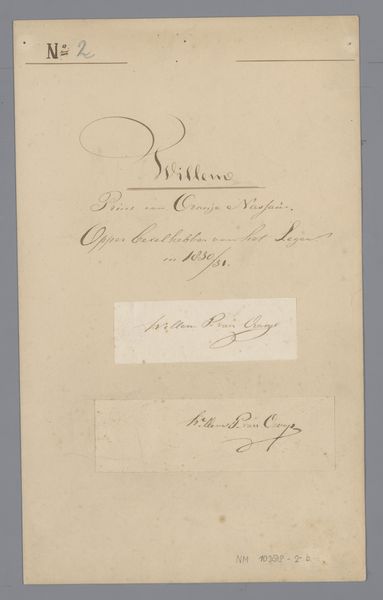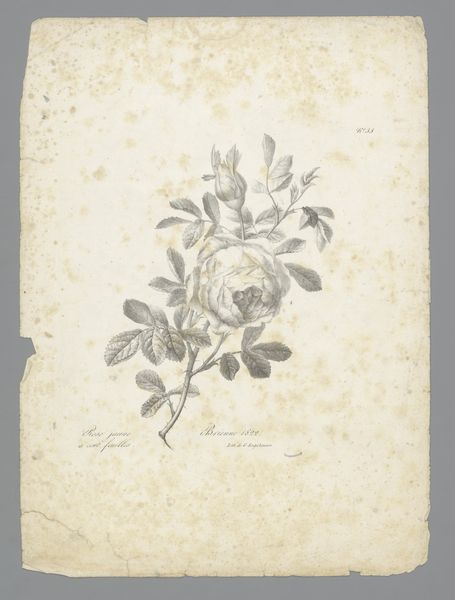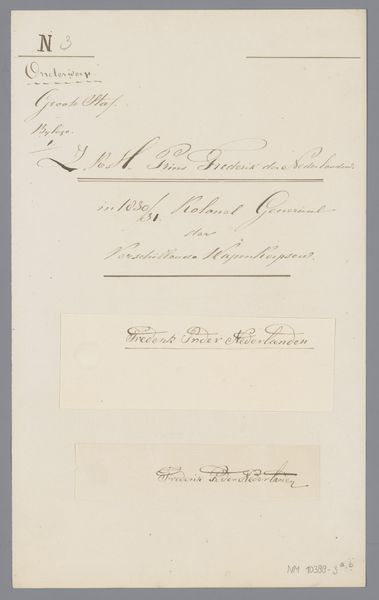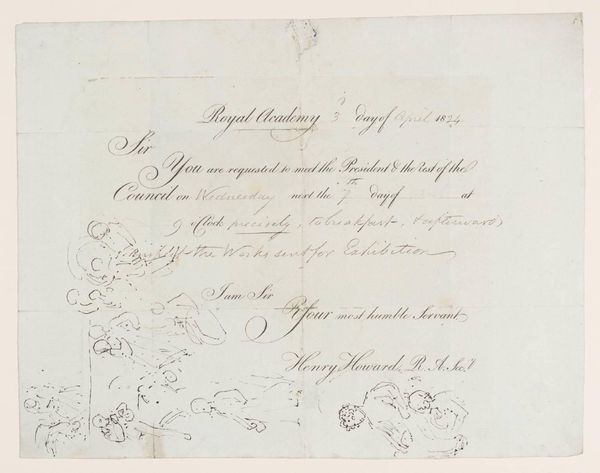
Acht handtekeningen geplakt op een blad met stokrozen en decoratieve rand 1904
0:00
0:00
drawing, collage, paper, ink, pencil
#
portrait
#
drawing
#
collage
#
paper
#
ink
#
geometric
#
pencil
Dimensions: height 451 mm, width 314 mm
Copyright: Rijks Museum: Open Domain
Editor: This collage, created in 1904 by George Lourens Kiers, titled "Acht handtekeningen geplakt op een blad met stokrozen en decoratieve rand"—Eight Signatures Pasted on a Sheet with Hollyhocks and Decorative Border—is fascinating. It’s made with ink, pencil and paper, featuring pasted signatures within a botanical drawing. It feels almost like a formal garden, with carefully arranged elements. How do you interpret this piece? Curator: This work speaks to me of the late 19th and early 20th century obsession with celebrity and collecting, filtered through a very particular lens of class and gender. The signatures, carefully arranged and surrounded by a meticulously rendered floral border, become trophies. Whose signatures are they, I wonder, and what did it mean to Kiers to possess them? How does the act of collecting signatures relate to broader power dynamics of the time? Editor: So, you see the piece as a statement about power? It’s interesting because I didn’t initially consider the signatures' relative importance; I saw them more as equal parts of a larger composition. Curator: Exactly. The decorative botanical frame also plays a significant role. It softens and domesticates the power dynamic inherent in collecting signatures, almost as if framing masculinity and authority. Does it make you consider gender roles of the time? How women were often relegated to decorative roles while men held public positions? Editor: That's a fascinating perspective! I was only considering the aesthetic aspect, but seeing it through the lens of gendered power relations shifts my understanding entirely. Curator: It highlights how even seemingly innocuous works can reflect broader social structures. Editor: I’ll definitely look at art differently now, considering not just what’s on the surface, but also what's happening beneath. Thanks for making me rethink the politics within this botanical arrangement.
Comments
No comments
Be the first to comment and join the conversation on the ultimate creative platform.
